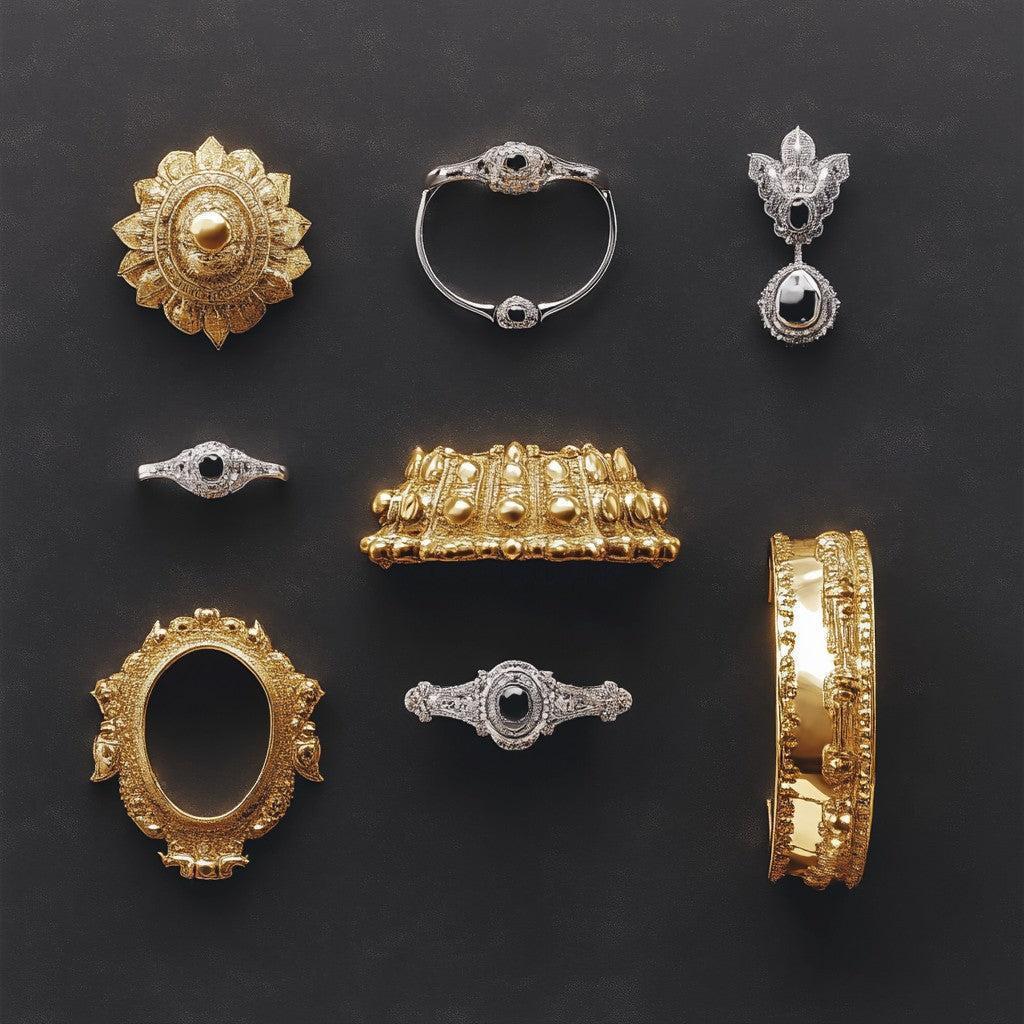
The Legacy of Javanese Gold Jewellery
Share
Gold jewellery has been a prominent craft in Southeast Asia since the late 1st millennium BCE, with rings and ear ornaments being among the most common forms. During the Classical Period (7th–16th centuries), Javanese goldsmiths created intricate designs inspired by Hindu-Buddhist iconography. The Weltkulturen Museum in Germany holds one of the largest collections of Javanese gold, alongside significant collections in Indonesia, the UK, the Netherlands, and the US.
Necklace with Leaf-Shaped Pendants: Dating back to the late 9th to early 10th century, this gold necklace features nine leaf-shaped pendants, exemplifying the refined artistry of the Central Javanese period.

Historical Significance and Dating Challenges
Despite its rich heritage, dating Javanese goldwork remains a challenge due to the lack of precise provenance for most artefacts. Stylistic and material analyses help distinguish pieces from the Early Javanese Period (7th–10th centuries) and the Late Javanese Period (10th–16th centuries). Some artefacts have been discovered in archaeological contexts, but many originate from shipwrecks like the Intan and Cirebon wrecks, which carried gold jewellery as part of maritime trade.
Socio-Cultural Functions of Gold Rings and Ear Ornaments
Central Java, gold ring in the form of a globular eight-petal lotus design 12th - 15th century

Javanese gold jewellery held deep cultural and symbolic significance:
Burial Customs – Rings and gold ornaments were found in pre-Islamic high-status burials and temple foundations.
Trade and Currency – Rings were used in commerce, exchanged in love tokens, and given as wedding gifts.
Spiritual and Protective Uses – Gold was believed to bring good fortune and serve as amulets against misfortune.
Symbols of Power and Status – Gold adornments signified nobility, with sumptuary laws regulating who could wear them.
Aesthetic and Literary Importance – Javanese literature and temple reliefs depict jewellery as essential to beauty and courtly life.
The Mastery of Javanese Goldsmiths
The armlet bears a repoussé plaque of the Javanese kala, a protective symbol which traditionally adorns the top of main entrances of temples and is still found in many parts of Indonesia. The armlet also has flexible chains, some of which were already broken when it was discovered. The earrings, each with a socket joint and wire hinge, are set with diamonds.

Goldsmithing was a highly regarded profession, with specialized artisans creating diverse jewellery types. Techniques such as chasing, stone setting, and open-work designs were prominent. Gold was alloyed with silver and copper to achieve different colors and properties, depending on the intended use—soft alloys for intricate decorations and harder ones for durability.
Conclusion
This ancient Javanese gold necklace from the Jakarta National Collection exemplifies the rich heritage of Javanese goldsmithing.
 Javanese goldsmiths achieved remarkable technical and artistic sophistication, setting their work apart from other Asian traditions. Their craftsmanship reflected a fusion of cultural influences, adapting motifs from South Asian coins and intaglio. The enduring legacy of Javanese gold jewellery is a testament to its historical, artistic, and social significance.
Javanese goldsmiths achieved remarkable technical and artistic sophistication, setting their work apart from other Asian traditions. Their craftsmanship reflected a fusion of cultural influences, adapting motifs from South Asian coins and intaglio. The enduring legacy of Javanese gold jewellery is a testament to its historical, artistic, and social significance.
